
Tuskegee University is a private, historically black land-grant university in Tuskegee, Alabama. It was founded on July 4th in 1881 by the Alabama Legislature.
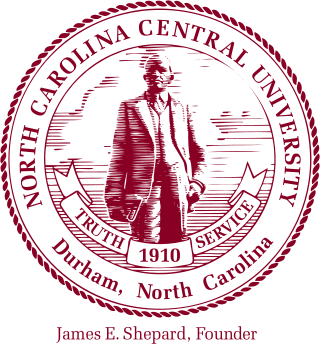
North Carolina Central University is a public historically black university in Durham, North Carolina. Founded by James E. Shepard in affiliation with the Chautauqua movement in 1909, it was supported by private funds from both Northern and Southern philanthropists. It was made part of the state system in 1923, when it first received state funding and was renamed as Durham State Normal School. It added graduate classes in arts and sciences and professional schools in law and library science in the late 1930s and 1940s.

Elizabeth City State University (ECSU) is a public historically Black university in Elizabeth City, North Carolina. It enrolls nearly 2,500 students in 28 undergraduate programs and 4 graduate programs and is a member-school of the Thurgood Marshall College Fund and the University of North Carolina system.

A normal school or normal college is an institution created to train teachers by educating them in the norms of pedagogy and curriculum. Many such schools have since been called teacher training colleges or teachers' colleges, but in Mexico, continue to be called normal schools, with student-teachers being known as normalistas. Many schools require a high school diploma for entry, and may be part of a comprehensive university. Normal schools in the United States, Canada, and Argentina trained teachers for primary schools, while in Europe, the equivalent colleges typically educated teachers for primary schools and later extended their curricula to also cover secondary schools.
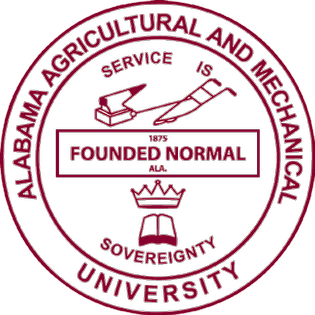
Alabama Agricultural and Mechanical University is a public historically black land-grant university in Normal, Huntsville, Alabama. Founded in 1875, it took its present name in 1969. It was one of about 180 "normal schools" founded by state governments in the 19th century to train teachers for the rapidly growing public common schools. It was one of 23 established to train African Americans to teach in segregated schools. Some closed but most steadily expanded their role and became state colleges in the early 20th century and state universities in the late 20th century. AAMU is a member-school of the Thurgood Marshall College Fund and is accredited by the Southern Association of Colleges and Schools. Alabama Agricultural and Mechanical University Historic District, also known as Normal Hill College Historic District, has 28 buildings and four structures listed in the United States National Register of Historic Places.

Alabama State University is a public historically black university in Montgomery, Alabama. Founded in 1867, during the Reconstruction era, it was one of about 180 "normal schools" established by state governments in the 19th century to train teachers for the rapidly growing public common schools. It was one of 23 established to train African Americans to teach in segregated schools. Some of the 180 closed but most steadily expanded their role and became state colleges in the early 20th century and state universities in the late 20th century. ASU is a member-school of the Thurgood Marshall College Fund.

William Hooper Councill was a former slave and the first president of Huntsville Normal School, which is today Alabama Agricultural and Mechanical University in Normal, Alabama.
Athens State University is a public upper-division university in Athens, Alabama. Its academics are housed in three colleges: Education, Arts and Sciences, and Business.

Dexter Avenue Baptist Church is a Baptist church in Montgomery, Alabama, United States, affiliated with the Progressive National Baptist Convention. The church was designated as a National Historic Landmark in 1974 because of its importance in the civil rights movement and American history. In 1978 the official name was changed to the Dexter Avenue King Memorial Baptist Church, in memory of Dr. Martin Luther King Jr., who was pastor there and helped organize the Montgomery bus boycott in 1955 during the civil rights era. The church is located steps away from the Alabama State Capitol.
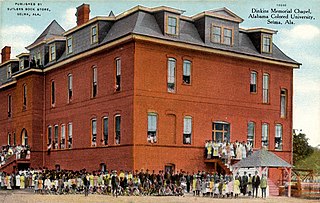
Selma University is a private historically black Baptist Bible college in Selma, Alabama, U.S.. It is affiliated with the Alabama State Missionary Baptist Convention.

Huntingdon College is a private Methodist college in Montgomery, Alabama. It was founded in 1854 as a women's college.

The Lincoln Normal School (1867–1970), originally Lincoln School and later reorganized as State Normal School and University for the Education of Colored Teachers and Students, was a historic African American school expanded to include a normal school in Marion, Alabama. Founded less than two years after the end of the Civil War, it is one of the oldest HBCUs in the United States.
This is an incomplete list of historic properties and districts at United States colleges and universities that are listed on the National Register of Historic Places (NRHP). This includes National Historic Landmarks (NHLs) and other National Register of Historic Places listings. It includes listings at current and former educational institutions.
The Cherokee Female Seminary was built by the Cherokee Nation in 1889 near Tahlequah, Indian Territory. It replaced their original girls' seminary, the first Cherokee Female Seminary, that had burned down on Easter Sunday two years before. The Seminary was listed on the National Register of Historic Places in 1973.

Harris–Stowe State University (HSSU) is a public university. It is in St. Louis, Missouri. It is an HBCU, a historically Black university. The university offers 50 majors, minors, and certificate programs in education, business, and arts & sciences. It is a member-school of the Thurgood Marshall College Fund. It is immediately east of the Saint Louis University campus. The school enrolled 1,098 students in 2023.
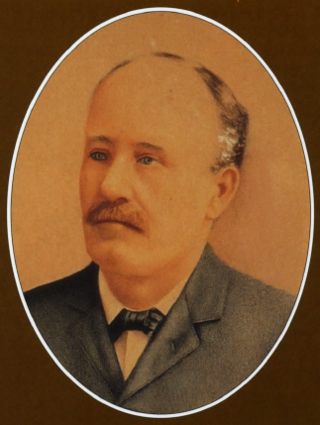
William Burns Paterson was an educator and horticulturist. He is chiefly known as an educational provider, being involved in establishing Alabama State University. He was a Democrat, a Presbyterian, and a charter member of the Alabama State horticultural society.
Tullibody Academy was a school for African Americans in Hale County, central western Alabama. It was established by William Burns Paterson in the early part of 1870.
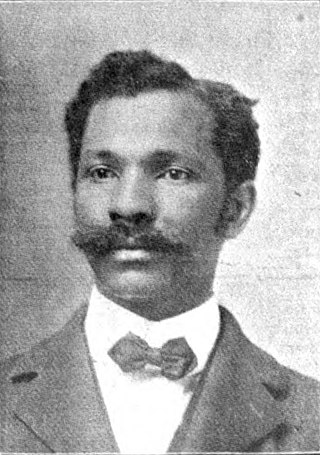
James Munroe Canty was an American educator, school administrator, and businessperson. Canty was an acting principal of the West Virginia Colored Institute in 1898 and is considered by West Virginia State as an acting president. Canty also served as the superintendent of Mechanical Industries for West Virginia Colored Institute from 1893 through 1914.

William Hooper Councill High School served African American students in Huntsville, Alabama, from 1867 until 1966 and is now the site of William Hooper Councill Memorial Park. The first public school for African Americans in Huntsville, it was named for William Hooper Councill who founded Lincoln School in Huntsville and pushed for its expansion into the state normal school it became in 1875, leading to its becoming Alabama A&M University. The high school has several prominent alumni.


















